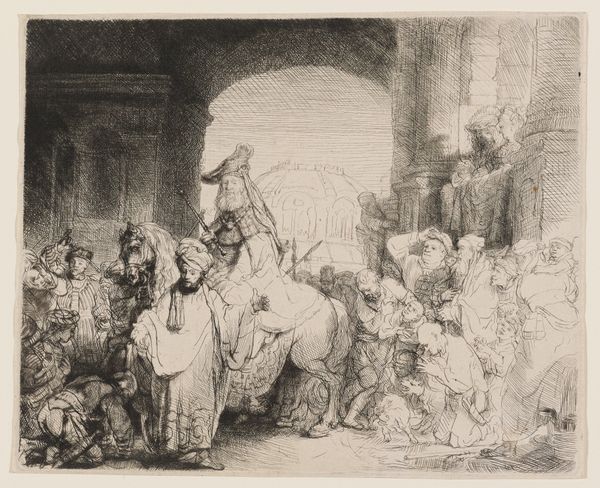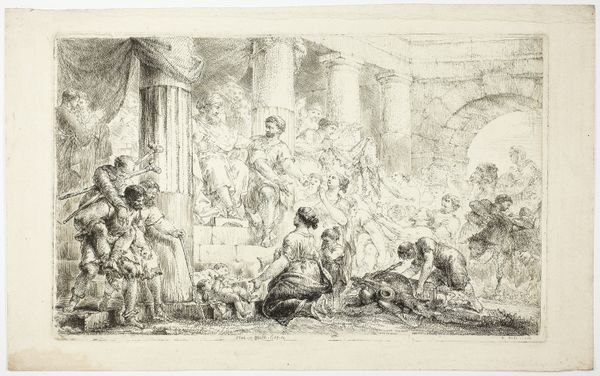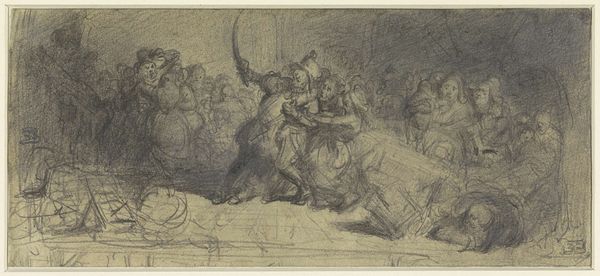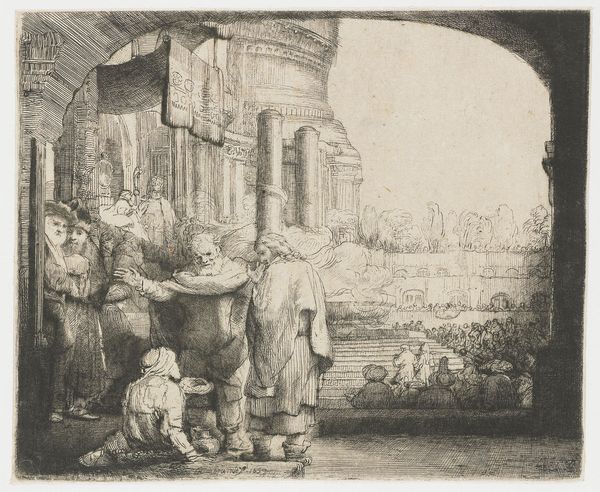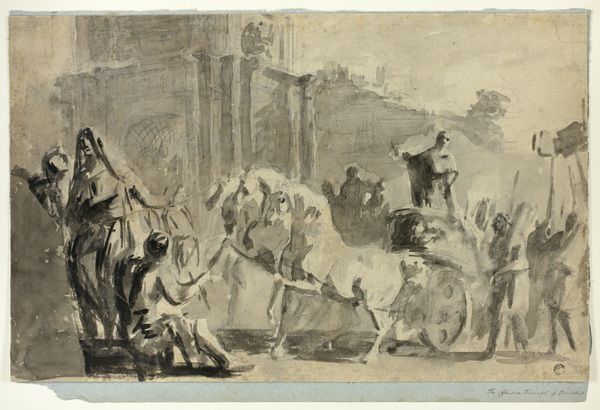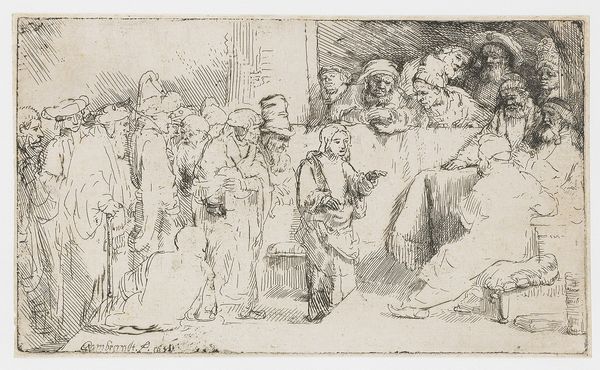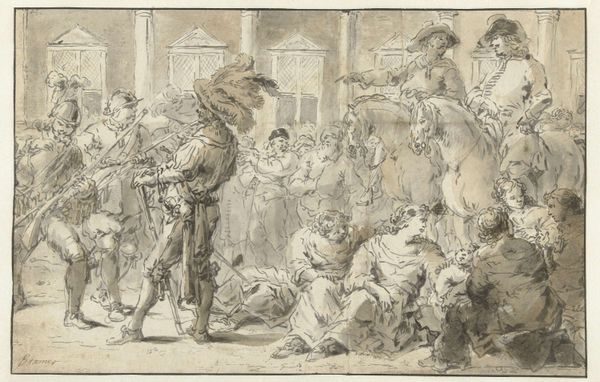
print, etching, engraving
narrative-art
baroque
etching
figuration
line
history-painting
engraving
Dimensions: height 175 mm, width 215 mm
Copyright: Rijks Museum: Open Domain
Editor: Here we have Rembrandt van Rijn's etching "The Triumph of Mordecai" from around 1641. It's quite intricate, even chaotic at first glance, but there's a sense of grandeur. What story does it tell, in your eyes? Curator: Ah, Rembrandt's dramatic storytelling shines even in his prints! Look at how he uses light and shadow, the strong diagonals pulling us in. The composition almost vibrates with nervous energy, a controlled chaos, you might say. Based on the Book of Esther, imagine the moment when Mordecai, an Israelite, is honored while Haman, who plotted against him, is forced to lead the procession. Editor: So, it's a tale of good triumphing over evil. But everyone seems to react so differently... some celebratory, others, well, downtrodden. Curator: Exactly! It's the genius of Rembrandt. Notice how he captures those varied human emotions? That old man at the margins scratching his head in confusion? He invites us into the moment, almost daring us to take sides. Rembrandt saw life in all its complexities. Do you think we lose the effect without color? Editor: Not at all. If anything, the monochromatic medium heightens the emotional tension and sharpens our focus on those details and expressions. You almost feel the weight of the scene in those dark lines. Curator: Yes! A masterclass in conveying mood through line and shadow. Next time you feel wronged, think of Mordecai, or better yet, Haman - and then go create! Because art helps us grapple with the complex shades and colours of human life. Editor: Absolutely, seeing those "shades of gray," if you will, really brought the story to life in a new way!
Comments
No comments
Be the first to comment and join the conversation on the ultimate creative platform.
